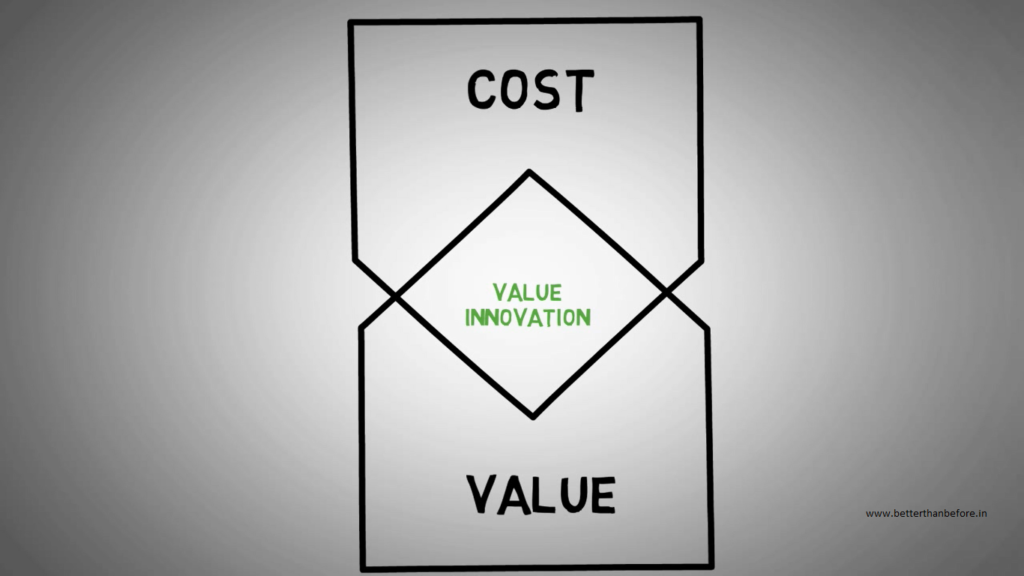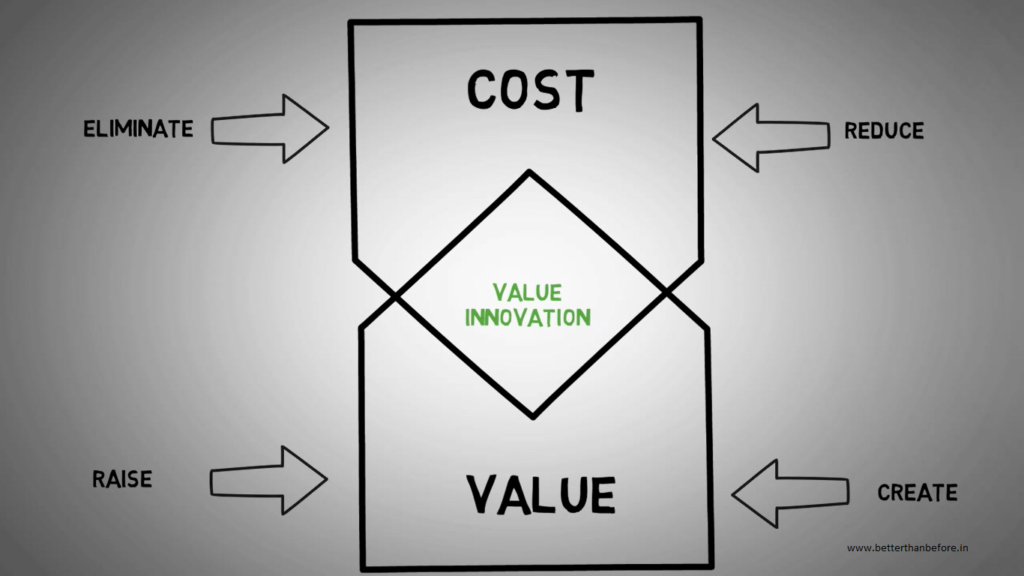Most people think that if you want success in business then you need to beat the competition in the market. To beat the competition, you are required to fight with the existing players in the market so that you can snatch the piece of market share which is in their hands right now. But according to the Blue Ocean Strategy, trying to beat the competition is not a great business strategy. It can lead to losses and it can slow your progress as well.
When you are trying to beat the competition then you are actually trying to be the best performer in the market. How easy do you think it would be for you to just enter the market and become better than all the companies and businesses which are doing businesses in that market for years? If you are trying to enter an established market, like the mobile phone market of the current time, and you are aiming to be the best performer in the market, then what you are following is the Red Ocean Strategy. Our aim here is not to adopt the Red Ocean Strategy, what we are looking for is the Blue Ocean Strategy.
Why Is Red Ocean Strategy not a great strategy?
Today’s world is very advanced in the field of technology. As soon as big companies find an established market, it is very easy for them to enter that market and saturate it. They have got all the necessary resources to capture the whole market. As the time passes, more and more companies enter the same market and as a result, the market becomes over saturated.
Take the television market as an example. Suppose you were the first person to invent a television which could be connected to the internet. Since, the television market is already being served by too many companies, now almost all the companies are offering such TV’s. Even when you were the innovator with a unique idea, it took just a few months for the big companies to start producing what you created. Now you are just a small fish who will be extinct soon because you neither have technology nor money to scale as rapidly as the big companies. This is why you should not enter an established market as it can be saturated by big companies.
What exactly is a saturated market?
Market saturation is a condition in which almost every customers’ needs have been fulfilled. For example, it is safe to assume that currently, all the people in the urban areas have cell phones. In such a case, we can say that the urban market for cell phones is saturated.
Read more about market saturation on Investopedia.
Why not enter a saturated market?
When a market gets saturated, then there remains only one way to survive – fighting for market share. Since each and every customer already has a product of some company, all you can do is to make the customer ditch the current company and start using a product offered by you. There is no new customer who has a genuine need for your product.
Now, this fight for market share sheds a lot of blood of the companies in the form of losses and makes the water red. Hence it is called the red ocean strategy.
The Blue Ocean Strategy
Now instead of trying to grab your piece of share, if you pass through this red watered ocean to find a territory with blue water then you dramatically increase your chances of survival and profitability. The blue water here is the symbol of an untapped market, a market where there is a need for a new product but no big firms are serving it. This strategy is known as Blue Ocean Strategy.
Related: Zero to One Summary
How to implement Blue Ocean Strategy?
To implement the Blue Ocean Strategy, the first thing that you need to find out is your Value Innovation. Value Innovation is a product which is not only innovative but it can also give value to the customers. The price of this product should be similar to the existing products on the market. This piece can be a little high or low as compared to the existing alternatives but the difference should not be too much.

Blue Ocean Strategy Summary
After finding your value Innovation, you have to work only on four factors – Eliminate, Reduce, Raise and Create. Don’t worry if you are feeling like nothing is going inside your head, I will be explaining everything with a very simple example, but first, let us try to understand these four factors.

Eliminate Reduce Raise Create – Blue Ocean Strategy Summary
- Eliminate- Find out the factors which are present in the current market offerings but you can eliminate them completely while you are offering your product.
- Reduce- There might be some factors which cannot be eliminated completely, but still you can reduce them.
- Raise- There can be some factors in the current market which are of low standards. So can you raise the bar and bring something which is way above the market standards?
- Create- Is there something which has never been introduced to the market? Can you create something new?
Examples of Blue Ocean Strategy
Now let us understand the Blue Ocean Strategy with Oyo Rooms’ case study as an example. Oyo Rooms started its business in India in 2013 with Blue Ocean Strategy. Now this company works in more than 200 towns and cities across the country.
What was the Value Innovation of Oyo rooms?
Oyo Rooms started providing hotel stay to the customers at very low prices. The experience of staying in these hotels was on par with the experience of staying in a 3-star hotel.
What did Oyo eliminate?
Oyo eliminated all those unnecessary typical offerings of three-star hotels which unnecessarily increased the maintenance cost of the hotel. Facilities like big lounges, spas, and sports clubs were completely absent in Oyo properties.
What did Oyo reduce?
When all the unnecessary expenditures were eliminated from the maintenance cost of the hotels, the cost of staying in the hotels automatically got reduced.
What did Oyo raise?
Oyo focused on increasing the standard of all those factors which increased customer satisfaction like hygiene, free wifi, big flatscreen TVs in the rooms and many more such factors.
What did Oyo create?
With the aim of cost saving, many of the properties of Oyo are situated in non-prime locations. In such a case, Oyo built mobile apps so that they can bring their inventory in front of the eyes of the customers. This strategy brought even more visibility to Oyo’s properties than the properties which were located in prime locations.
Apart from this, Oyo also created standardization. Whenever you will go to an Oyo property you will find some things which are exactly similar to its other properties. This brought predictability in the minds of customers. Now the customers know that if they will go to an Oyo hotel then which of their expectations will be met with 100% assurance.
So this was the summary of Blue Ocean Strategy with an example. Here is a Hindi animated book summary of the same book-
